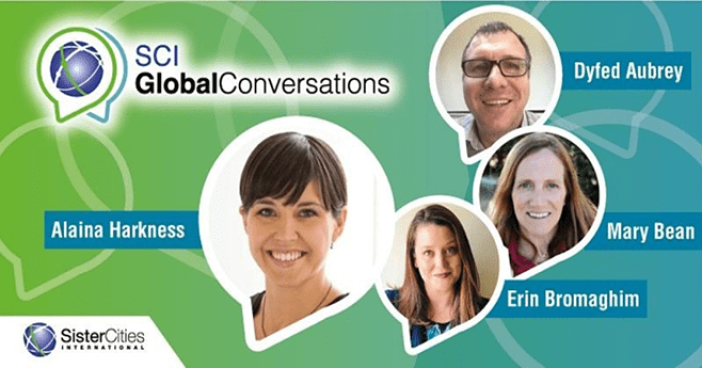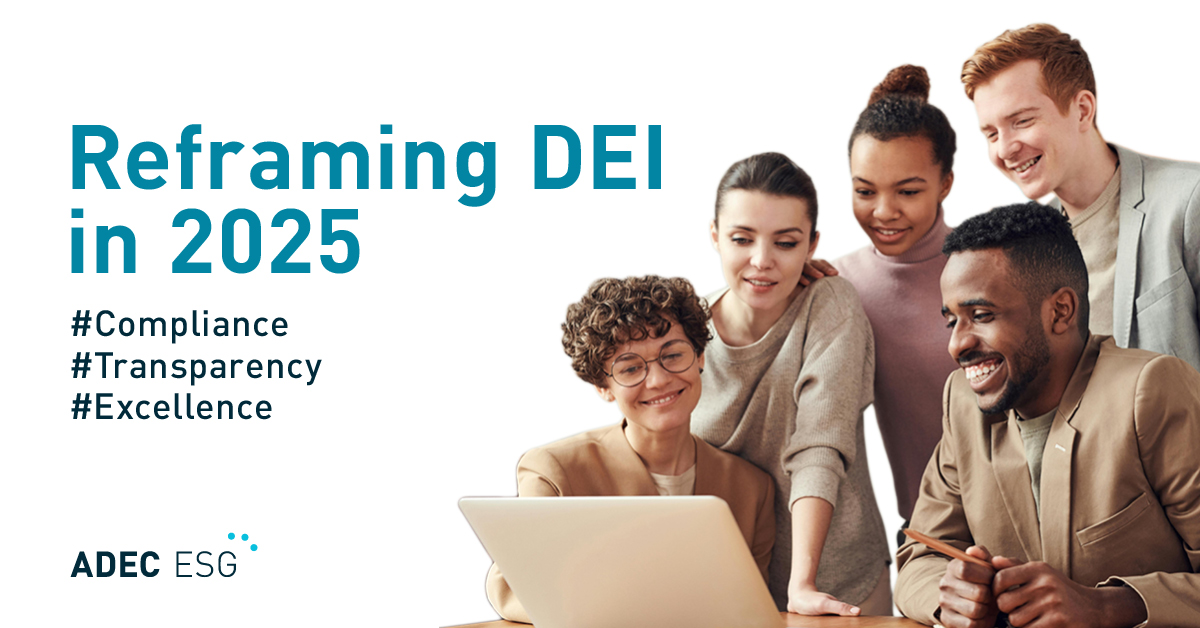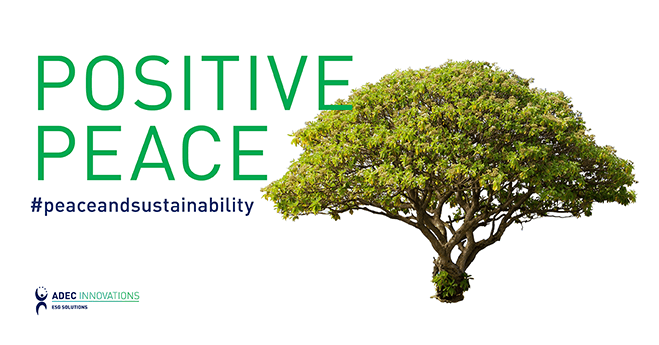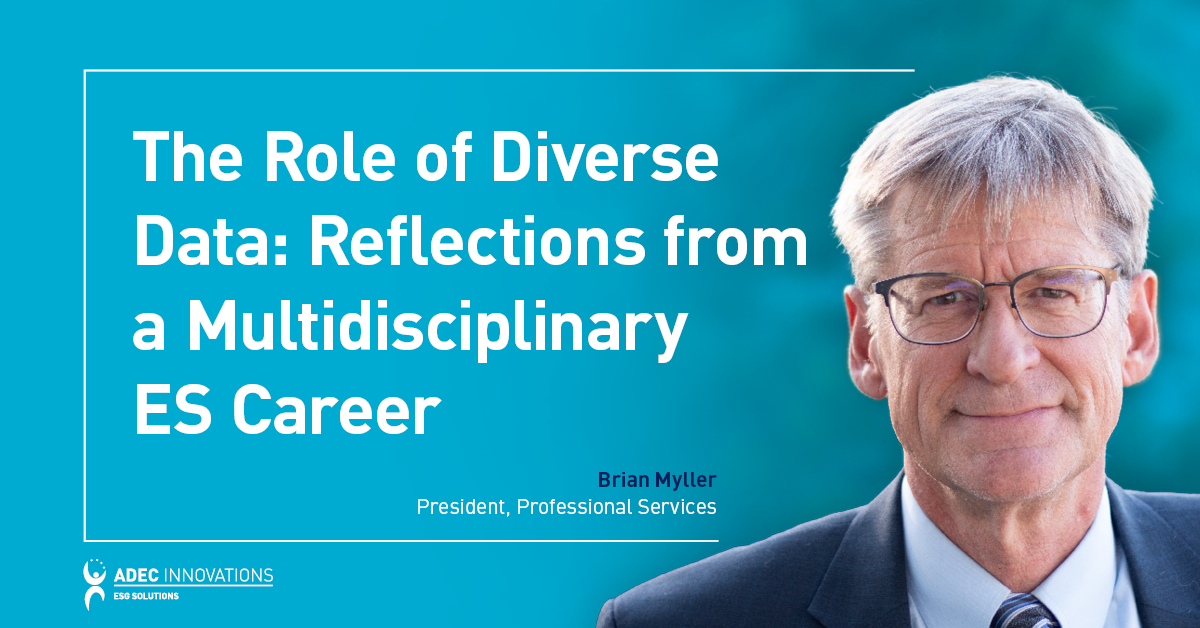ADEC Innovations recently joined Sister Cities International (SCI) and the Global CEO Alliance (GCEOA) in a recent webinar, City Resiliency and Why it Matters: Global Impacts in a Local Context, to introduce and explain crucial concepts related to resiliency, ESG, and the Sustainable Development Goal (SDGs) as they relate to cities.
2020 has undoubtedly pushed resiliency front and center. In her opening remarks, Alaina Harkness, Executive Director at Current Innovation, NFP, reflected on this year as a catalytic moment where the COVID-19 pandemic has redefined what it means to build a more resilient world. The webinar provides an array of conversations on resiliency issues and solutions, examining how we can bring the vision of sustainable goals to reality, starting with cities. To achieve this, it takes leadership across all levels: from governments and corporations, to civic organizations and community partners.
Our Panelists and Crucial Conversations
Each panelist brought a unique set of priorities and perspectives on the topic of what is required to make cities resilient as we build back better. Dyfed Aubrey, the Inter-Regional Advisor at UN-Habitat (United Nations Human Settlements Programme), provided global context, discussing how the UN can use the 17 sustainable development goals (SDGs) to drive the change needed by 2030. As the Director of Environmental Services for FCS International, I discussed how cities are embracing the SDGs, the challenges and opportunities that are presenting themselves especially in regard to finance, and the various methods being used to demonstrating progress towards compliance.
The final speaker, Erin Bromaghim, Director of Olympic and Paralympic Development for the Office of the Mayor of Los Angeles, tied the discussion together, demonstrating how the City of LA is focusing on localized SDG targets that reflect the City’s unique character and diverse population. In order to achieve this vision, we discussed the necessity of a shared governance framework—a shared accountability on the government level as well as the local and corporate levels. Actions on a local level can have significant global impact. To learn more about how all levels are essential in achieving the SDGs, and how we can bring them together, watch the webinar here.
What are the SDGs and Why Do They Matter?
Dyfed led the conversation, exploring how we can make the global framework achievable on a local scale, and why SDGs matter. Adopted by all UN Member States in 2015, the SDGs provide a shared blueprint for peace and prosperity for people and the planet, now and into the future. The SDGs are an urgent call for action by all countries—developed and developing— in a global partnership. They recognize that ending poverty and other deprivations must go hand-in-hand with strategies that improve health and education, reduce inequality, and spur economic growth— all while tackling climate change and working to preserve the earth’s many unique habitats. Dyfed explained how the SDGs are a universal call to action and how capacity building will be required to allow cities to participate effectively in projects that support the SDGs and drive sustainable development and innovation.
How Do the SDGs Matter?
The current pandemic has dramatically impacted how businesses operate. In providing an overview of resiliency in the private and public sector, I discussed how the SDGs are driving investor priorities, which in turn are having a dramatic impact on business. Private sectors across industries report and measure against three main factors, Environmental, Social, and Governance (ESG). Together these factors provide a common measure of a corporation’s resiliency; essentially, how a corporation’s operations affect the environment, its workforce, and customers, and how its corporate policies and decisions affect the environmental and social components.
Increased resiliency strengthens their operations, and makes their workforce, customers, and overall community stronger through responsible sourcing, supply chains, production distribution, and recovery.
Over the past few decades, the private sector has come to understand how alignment with ESG principles makes good business sense. Increased resiliency strengthens their operations, and makes their workforce, customers, and overall community stronger through responsible sourcing, supply chains, production distribution, and recovery. These actions across the private sector are moving towards a circular economy.
We now see cities aligning themselves around the SDGs, and a growing number of organizations and networks are being created to provide resources and assistance. While there are several organizations available, check out the webinar to see those I mentioned, as well as learn the vital trends, challenges, and opportunities as they relate to SCI.
Implementing SDGs on a Local Scale
Erin Bromaghin enhanced the discussion by focusing on how Los Angeles is addressing compliance with the SDGs. Erin and her team measures the City’s progress towards the SDGs. Erin offered a persuasive point from Mayor Eric Garcetti: you cannot manage what you cannot measure. It is vital to establish goals that are meaningful in the context of your cities’ priorities, and in doing so prioritizing your SDGs. Los Angeles implements their SDGs within three different sectors: measure, mobilize, and connect. Her discussion detailed that by integrating their reporting globally, building tools that are reusable, and having networks of implementation by connecting with each other all around, the city strategically drives their progress towards their SDGs.
A Global Call for Action
The webinar provides a high-level overview of actions needed by 2030, and how we can get there with the evolution of practical lessons shared by our panelists. Individual cities can effectively play a role in holding the SDGs as a focal point and main driver for succeeding in adaptability and resiliency at the local level. Data acts as a driving force and contextualizes a way to concretely translate these goals into action. The actions we take to contextualize, disaggregate, and align on a global level, community level, and corporate level is compelling and clear.
“We are clearly at the crossroads, on many fronts. While the challenges are great, there are more and more opportunities to rethink how things can be done, and to put more energy into how local cities can be reimagined.”
James Donovan, CEO of ADEC Innovations and Board Member of SCI, closed the webinar by reflecting on the pivotal role SCI has in driving action and creating impact on the facets of sustainable development challenges. SCI believes in the transformative capacity of local governments and municipalities to create positive impact locally on the global journey towards sustainability. He added that there is an increasing number of local leaders and cities that are directing and affecting positive change—local governments are becoming proactive catalysts for progressive leadership and action. Touching on the three pillars of engagement, Mr. Donovan underscored the need for local governments to make cities more resilient and impactful, and also noted the financial returns and economic opportunities that the SDGs represent.
In his closing remarks he stated, “We are clearly at the crossroads, on many fronts. While the challenges are great, there are more and more opportunities to rethink how things can be done, and to put more energy into how local cities can be reimagined.”
Would you like to learn more? Watch the full webinar here where the insightful discussion promotes the sharing of best practices regarding resiliency and builds the capacity of local governments to develop resilient and equitable strategies for growth.
Get the latest on our upcoming webinars by subscribing to our monthly newsletter, GreenWatch.




